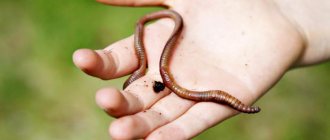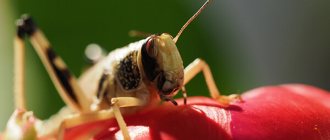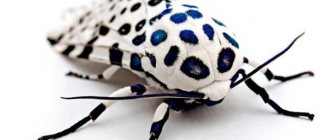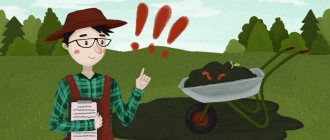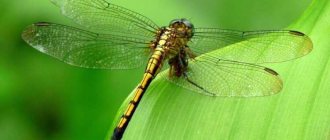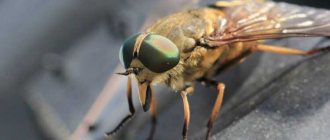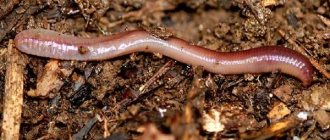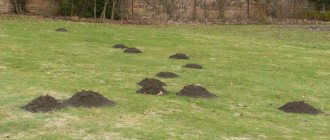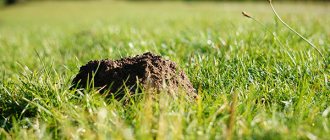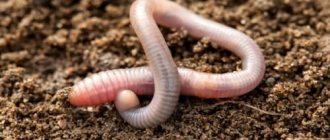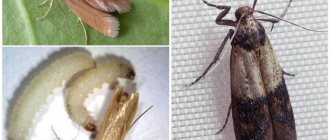Why are earthworms useful?
Earthworms are one of the most useful living creatures on the planet. Despite their unpleasant appearance, they are completely harmless, and their numerous populations make a huge contribution to the growth and development of all flora in the world.
Earthworm.
Worms are real orderlies and healers for the soil. The main benefits of these animals are as follows:
- enrichment of soil with useful substances and microelements;
- disinfection and deodorization of soil;
- restoration of fertile soil layer;
- accelerating the processes of decay of plant residues;
- loosening the soil;
- vermicompost production;
- promoting the colonization of beneficial microorganisms in the soil.
The influence of worms on the environment
Soil without earthworms becomes compacted, depleted, and susceptible to water and wind erosion. Its structure and biochemical composition deteriorate, and the development of beneficial microflora slows down. Accordingly, vegetation gradually becomes sparse and stunted, and living conditions for other underground and terrestrial organisms worsen.
The role and importance of worms in nature as orderlies is great. The bulk of organic remains are utilized by worms. Microorganisms cannot cope with a large volume of garbage, so the fewer invertebrates in the soil, the more favorable the environment for the development of putrefactive flora and parasites.
Humus (the active part of soils, a product of organic matter decomposition) is necessary to maintain the environment, since it:
- has the nutritional properties necessary for flora;
- gives plants immunity;
- binds and neutralizes dangerous chemical compounds and so on.
The main suppliers of humus are worms, since their excrement (vermicompost) is superior in nutritional value to other natural fertilizers. Over the course of a year, 50-120 tons of coprolites are formed per hectare of soil, which creates favorable conditions for the existence of living organisms.
How earthworms increase soil fertility
In order to improve the condition of the fertile soil layer, the simple presence of earthworms on the site is sufficient.
- In the course of their life, these animals eat various plant debris, bacteria, fungi and their spores, algae and even some types of nematodes.
- After digesting such food, the waste of worms contains large amounts of phosphorus, potassium, various enzymes, amino acids, antibiotics and many other biologically active substances.
This composition of earthworm excrement suppresses pathogenic soil microflora, promotes soil deoxidation, and even helps restore fertile soil that was destroyed due to improper use of chemical fertilizers or fires.
Research project “Why are earthworms needed? And what benefit do they bring?
Natalia Leshchenko
Research project “Why are earthworms needed? And what benefit do they bring?
Introduction.
When I was visiting my grandmother in the village in January of this year, while walking, I picked up a stump and saw earthworms . I know that worms are used to catch fish . I really like going fishing with my grandfather. I can string a worm on a hook , cast a fishing rod and catch a fish. worms in January , because in winter, as they explained to us in kindergarten in class, many animals, including worms , hibernate. The grandmother explained that this year there was an abnormally warm winter, and the worms came to the surface of the earth. “Wow, so many fish you can catch with these.”
- I said.
The grandmother laughed in response and said: “ Earthworms are guardian angels of all life on earth, although they live underground.” I asked my grandmother: “What does this mean? Why are earthworms needed ? What benefit do they bring ? She said that worms are called “the plow of the earth”
because they began to loosen the earth earlier than humans.
They are called “orderlies of the earth”
because, by passing the earth through their stomach, they save us from harmful microorganisms, and therefore from diseases.
They are called “living fertilizers”
for plants because they enrich the soil with nutrients.
This means that they can be called “treasures living underground
.
There are many living creatures on the earth and underground that we do not notice and are not aware of their benefits . But it turned out that the benefits of earthworms are great . It is microorganisms, fungi and worms , including earthworms , that are soil processors. They take part in the formation of humus, thereby improving fertility. Earthworms play a large role in natural ecosystems - they contribute to the decomposition of organic matter in the soil and enrich the soil with the most valuable fertilizer - humus (humus), so this work is relevant.
Relevance of the chosen topic: One of the most dangerous environmental problems today is soil pollution, its destruction structures, decreased fertility, but it is the soil that is the creator of food for humans and animals.
Why is modern soil depleted? Excessive chemicalization destroyed the animals of the soil community - the main producers of fertility. Therefore, the idea arose to devote my research work to earthworms . Worms are the creators of the soil , the first farmers. It is their activity that processes humus (humus)
last year's plant remains, manure.
Worms can eliminate the need to apply chemical fertilizers to increase crop yields. This means, firstly, all products grown in vermicompost will be environmentally friendly. And secondly, the absence of chemicals will have a beneficial effect on the environment and ecology in general. By independently producing humus with worms , we use waste rationally and save money by not spending it on chemical fertilizers.
With my work I want to draw attention to these useful underground workers, although they are unattractive animals.
So, the topic of my research : “ Why are earthworms needed ? And what benefit do they bring ?
Purpose: to study the vital functions of earthworms and their role in soil processing.
Tasks:
- read literature on this topic;
— study the characteristics of earthworms and their role in soil formation;
— using experiments to test the hypothesis;
— get an idea about earthworms ;
— find out how worms affect the composition of the soil;
— learn how to make vermicompost at home.
Hypothesis: earthworms increase soil fertility because, by loosening it, they mix the soil with plant residues and saturate the soil with oxygen. Object of study : earthworms .
Subject of research : life of earthworms .
Practical significance of the work: expanding knowledge about the animal world and applying the information obtained to preserve and increase soil fertility.
Main part.
From the encyclopedia and the Internet we learned:
Habitat and species of earthworms .
The Latin name for worms means vermes . Really. Worms are very similar to vermicelli. That's why the science of earthworms was called vermicology. Worms are large invertebrate soil animals that feed on plant debris. Earthworms are continuously operating mini-factories for the production of humus (soil organic matter)
.
The earthworm is called the "Nightcrawler"
.
It turns out that worms crawl onto the soil surface at dusk and at night, and during the day only after rain . Earthworms are widespread in all corners of our planet with the exception of Antarctica. Earthworms live wherever there is dead organic matter and suitable soil moisture.
There are about 97 species of them in the soils of our country. According to the characteristics of their biology, earthworms can be divided into litter-dwelling, soil-litter, burrowing and burrowing. Litter and burrowing worms inhabit places with waterlogged soils - the banks of reservoirs, swampy soils, soils of humid subtropics. In the tundra and taiga, only litter and soil-litter forms live, and in the steppes - only soil forms. Earthworms best in coniferous-deciduous forests: all types live in these zones.
Description of the appearance and lifestyle of earthworms . The earthworm has an elongated body, 1 - 2 cm long, on average 10 -16 cm, but sometimes up to 3 meters. The body of an earthworm is slippery , smooth, cylindrical in shape, and consists of segments. Such a structure and developed muscles facilitate the process of movement in the soil. The number of segments reaches two hundred. On each segment of the worm , except the very first, a number of short bristles grow, on which it relies to move through the layers of soil. Under the skin there are muscles fused with it. Circular muscles make the body of the worm thin and long , and longitudinal muscles shorten and thicken it. of the worm occurs .
The surface of the body, which could conventionally be called the back, is convex, the abdominal surface is flat and lighter. On the body of an earthworm , where its front part ends, there is a thickening called the girdle. It contains special glands that secrete a sticky liquid. During reproduction, an egg cocoon is formed from the girdle, and eggs develop in it. This mucus also facilitates the movement of the worm in the soil . In addition, only through moist skin does necessary for breathing worm's Earthworms do not breathe air , but their skin. Cells accumulate air, then release it to all organs. When it rains, water fills the earthworm passages underground . To avoid suffocation, they have to crawl to the surface. That’s why they are called so – earthworms . They crawl onto the asphalt because it is warmer there than on the surface of the earth.
Such inconspicuous and small animals have a complex internal structure. Worms have a heart , blood vessels, stomach, intestines and other internal organs. The circulatory system of worms is closed , quite well developed, and the blood is red. Breathing is carried out through the skin, rich in sensitive cells, which is covered with protective mucus. The nervous system of earthworms consists of a poorly developed brain (two nerve ganglia)
and abdominal chain.
They have a developed ability to regenerate. Earthworms do not tolerate direct exposure to sunlight: drying out of the integument leads to the death of the animals. Therefore, during the day the worms are underground, and in the evening and at night they usually rise to the surface, where they eat organic debris.
In winter, earthworms hibernate . Due to the fact that frosts instantly kill earthworms , they prefer to burrow deeper into the ground, where frost does not penetrate. In spring, when the temperature reaches a suitable level and the ground is saturated with rainwater , earthworms become very active. The life of an earthworm is quite long ; under favorable conditions, worms live for decades . Birds, moles and humans pose a danger to them. also pose a serious threat to the life of the earthworm . Many worms die in the summer due to drought, and in the winter due to severe frosts. All these conditions shorten the lifespan of earthworms , which are the best helpers for gardeners. The role of earthworms in soil formation .
Earthworms are omnivores . They swallow a huge amount of soil, from which they assimilate organic matter, and they also eat a large number of all kinds of half-rotten leaves, with the exception of those that are very hard or have an unpleasant odor. The food consumed by earthworms is first ground up in their throats and then passed into the intestines. Some of the food is aimed at providing the worms with energy and promoting their growth. The rest of the food is excreted in the form of granules. The soluble nutrients in these pellets are more beneficial than the food consumed by the worms in the first place . These secretions are rich in calcium, magnesium, phosphorus and nitrogen. It has been established that worms help increase the content of phosphorus and potassium in the soil. During the day, each worm passes through its intestines an amount of earth approximately equal to the weight of its body, i.e. 4-5 grams. Every year, earthworms release a layer of excrement 0.5 centimeters thick onto the surface of the earth. The mass of earthworms in 1 hectare of fertile soil is 2 - 3 tons. In a day they can dig up 10–11 tons of soil, and in a year, from 10 to 30 tons of processed soil are thrown to the surface in the form of excrement. If you distribute this soil evenly over the entire surface of a hectare, you will get a layer of almost 10 centimeters. Therefore, earthworms are rightly considered the most important soil builders. By evenly mixing soil and plant debris, earthworms prepare a fertile mixture, much like a gardener. They loosen it so that there is no lump left larger than they can swallow. Dragging the leaves into their burrows, they crush them, partially digest them and mix them with earthen coprolites. Due to the digging activity of worms, the surface layer of soil is in constant motion. As a result of this "digging"
soil particles rub against each other, new layers of soil brought to the surface are exposed to carbon dioxide and humic acids, which contributes to the dissolution of many minerals.
The formation of humic acids is due to the digestion of by earthworms . Plant roots move freely in the soil along earthworm , finding rich nutritious humus in them. In loose soil, air circulates much better and moisture is retained, which also contributes to the growth and good development of plants. earthworms , nutrients from deep-lying layers of soil reach the upper layers, where they are easily absorbed by plants. Earthworms pass a large mass of dead plant matter through their intestines, in which the plant tissues are finally destroyed, digested and then mixed with the soil. Thanks to the activity of earthworms , the compost “matures” faster, turning after their processing into a loose, loose, consisting almost exclusively of granular excrement of worms , environmentally friendly and extremely useful fertilizer (vermicompost, which is easily absorbed by plants. It is also especially important that processed by earthworms With worms, plant residues acquire unique and valuable properties for the soil, since they are transformed into water-resistant, water-intensive, fertile structures. “ Worms perfectly prepare the soil for plant growth... They sift the soil so much that no dense mineral particles remain in it... They thoroughly mix all the soil , like a gardener preparing crushed earth for his most exquisite plants" (Charles Darwin)
. Igor Akimushkin in the book "Animal World: Invertebrates" writes: "Charles Darwin was one of the first to appreciate the great importance of unattractive
earthworms in the life of mankind. Several years of persistent he devoted his labor to researching . His work on earthworms is one of the most interesting and significant books in natural history. Darwin found that earthworms pass through the entire arable layer of soil within a few years. They enrich depleted lands with fresh humus, loosen them, simultaneously fertilizing them with their secretions and leaves taken into burrows. Burrowing in the ground and swallowing it, they create a strong lumpy soil structure - air and moisture penetrate deeper into the soil better. Countless worm , like a capillary network of living tissue, provide ideal drainage and ventilation of the soil." The harm that people bring to earthworms . Unfortunately, earthworms are now in great danger. This is due to the active use of chemicals in agriculture. By treating fields with various pesticides to control pests, people also destroy such beneficial worms . Digging up soil causes great . In this case, the earth dries out under the scorching sun and the worms , experiencing a lack of moisture, die. In the spring, on dug up soil, worms become easy targets for birds. Having dug up the ground in late autumn, people destroy the burrows of worms that have managed to settle down for the winter.
Practical part.
We found worms We found them under large stones, stumps, and in compost pits on the site. There were 30 large worms , about 9 cm, and 26 small ones, about 5 cm.
Experiment No. 1 Observation of the movement of an earthworm .
Having found the worms , I placed them in a glass jar. Imagine my surprise, after a while “escaped” from me
.
I had to go hunting and collect worms . Fortunately, on my grandmother’s plot there were many heaps of plant debris, where there were a lot of worms . Worms also lived under large stones and stumps, where it was damp. Based on the experimental data, we can conclude: worms are prone to migration and, if their freedom is not limited, they will crawl away. You can’t explain to them that they should live here.
Experiment No. 2 Looking at an earthworm through a magnifying glass .
Having planted a new batch of worms in a jar , I watched them move along the walls of the jar. We took the worm in our hands and found that its skin was wet and covered with mucus. This mucus facilitates the movement of the worm in the soil . In addition, only through wet skin does oxygen necessary for breathing penetrate.
If you look at an earthworm through a magnifying glass , you can see how it moves. The body of an earthworm consists of rings (segments)
and is covered with mucus, which helps it move easily underground.
Under the skin there are muscles fused with it. Circular muscles make the body of the worm thin and long , and longitudinal muscles shorten and thicken it. Thanks to the alternating work of these muscles, movement occurs. You can also see the “Belt”
of the worm - a special thickening that is part of the reproduction system.
Here the head end slowly stretches forward. The middle is pulled towards it, but the rear end is still motionless. It serves as a support, relaxes, and then pulls up. This is how the worm moves forward . Alternately, contracting, then lengthening, expanding and shortening due to the muscles, it moves in the head direction. The worm made such movements .
As a result of the observation, we can conclude that the streamlined and cylindrical shape of earthworms and the flexibility of the body allow them to move easily and quickly under the thickness of the earth.
Experiment No. 3 Movement of a worm on a wet surface. If you put an earthworm on a wet surface, it cannot move forward, why? Because the bristles on the worm’s serve as a support for it, and on a wet surface the bristles slide, and the worm cannot move, much like you and I on ice.
Experiment No. 4 Can an earthworm ? Can an earthworm ? How to check? If you put a worm on a surface and clap your hands, for example, the worm will not , but if you knock on the surface on which it is crawling, the worm will react . This means that the worm does not hear , but only feels vibrations and vibrations, but it has no hearing.
Experiment No. 5 The structure of an earthworm . Does an earthworm have eyes or a head? To find out, just watch it - whichever side the worm crawls forward , there the head will be. The earthworm has no eyes because it spends most of its life underground, and there is no light or sun there, so it does not need . But it can distinguish between light and dark, this can be checked as follows: put the earthworm on a tray , which is half in the shade, and the other half of the tray is in bright sun. The worm tends to crawl to where it is darker.
Experiment No. 6 What does a worm ? Can an earthworm recognize odors ? To check this, place a piece of garlic in the path of the worm . The worm will crawl in the other direction, because it obviously doesn’t like the smell of garlic. From this we can conclude that earthworms recognize .
You can stroke the worm and feel the bristles on its body, which also help it move in space and move through the ground.
Experiment No. 7 What color is an earthworm . What color are earthworms ( brown)
Why?
Let's put the worm on colored paper , brown, green, yellow. the earthworm least visible ? On brown, because this is a protective color for the earthworm .
Experiment No. 8 Where is the earthworm's tummy and back ? Where is the earthworm's belly and back ? To see the tummy, you need to turn the worm on its back
.
And we will see that the lower part is lighter than the upper “back”
.
But the worm will immediately turn over, which means that it doesn’t care which side is up.
Experiment No. 9 Observation of the lifestyle of earthworms . During the entire period of the experiment - from January to mid-March - the earthworms fed regularly (as evidenced by the holes on the surface of the earth in the container)
.
Everything is confirmed by the fact that worms in January on my grandmother’s plot in the village. This suggests that the worms have not gone into hibernation. Therefore, we can conclude that positive environmental temperatures and the availability of food contribute to the active lifestyle of earthworms and their absence of hibernation.
Experiment No. 10 Daylight and the vital activity of worms . During the experiment, the container with earthworms was in a thick cardboard box that did not allow light to pass through. And the container was taken out only for watering and feeding the worms . At the same time, it was sometimes possible to observe the appearance of worms near the walls of the container or on the surface of the ground. daylight hit , they immediately tried to hide by burrowing into the ground. As a result, we can conclude that earthworms appear on the surface of the earth and feed at night.
Experiment No. 11 Determination of the role of earthworms in soil mixing. We took a transparent container and filled it with layers: 1st layer - earth, 2nd layer - sand, 3rd layer - earth. A clear boundary between the layers was visible. Then she placed worms . The ground was periodically sprinkled with water. After 1.5 months, the sand-earth
.
The result was a homogeneous mass. Based on the experimental data, we can conclude that by penetrating the soil with tunnels, earthworms loosen it , promote aeration and moisture at depth, mix the soil layers and thus increase soil fertility. Our experiment took place in winter, so we fed the worms tea waste and dead leaves.
Food for earthworms includes insects , rotting animal remains, manure, decomposed plant remains of herbs and organic matter. Having discovered food, they begin to dig in the ground, holding the food they find in their mouths. Worms really like to combine food with soil. The hypothesis was confirmed. Earthworms increase soil fertility because, by loosening it, they mix the soil with plant residues and saturate the soil with oxygen.
Experiment No. 12 Growing worms in a city apartment. The production of vermicompost using worms in a city apartment began by collecting worms on the site in a compost pit, in damp places, under stones. They put them in a container ( worm trap )
along with the land in which they lived.
Added compost (from the compost pit, plant debris and food waste. Periodically watered with water at room temperature to keep it slightly moist at all times. After a month and then every 2-3 weeks, added a layer of plant and food waste. The container is in a dark corner under the table, because worms do not like light Worms feed on almost any organic matter - potato peelings, various kinds of kitchen waste, used tea and coffee infusions, bread crusts, soaked newspapers, etc. From time to time, worms need to be given eggshells and fine sand. Sand serves worms in this way the same as pebbles for chickens - to improve digestion. Of course, all food given to worms must be crushed, since worms do not have teeth and cannot chew food. In addition to all this, we must not forget about watering, since when the substrate humidity is less than 35 % worms will die within a week. Never use chlorinated water . Chlorine is poison for worms . Either rainwater or well-settled water is used. Feed should be added periodically in small layers. When the worm bin (container)
is full,
the worms with part of the old substrate are transplanted into another worm bin (container, and start all over again. And the vermicompost from the old container is ready for use . In one day, one worm is able to process an amount of organic matter equal to its own weight. And the average weight earthworm is 0.5 g. Under natural conditions, the density of worms ranges from 100 to 20,000 individuals per square meter. So count the benefits ! In our work, we told and showed why such seemingly unattractive creatures are kept and bred like earthworms ? Mainly for the production of vermicompost. Vermicompost is a valuable organic fertilizer, the main waste product of worms . The worms themselves can also be used as food for various domestic animals (fish, amphibians and reptiles, as well as for some species of birds and rodents) .
Conclusion
Earthworms are very numerous in the soil, and their activity is of great importance in soil-forming processes. By burrowing in the ground, worms loosen the soil and thereby open up access to air and water necessary for the complete decomposition of organic matter. They drag rotten leaves and other plant and animal remains inside their underground passages and thereby contribute to enriching the soil with humus, and, rummaging in the depths, they pass the earth through their intestines, mix the soil and increase the thickness of its fertile layer. On loosened, mixed and humus-enriched soil, vegetation develops luxuriantly. What is the use of an earthworm ? Plants need water and air, which enter the soil with the help of worms , because they loosen it, laying their underground tunnels, and through them air and water flow to the plants. When earthworms dig , they plow the soil at the same time, which allows roots to grow, allowing for healthy plant growth. Tilled soil absorbs water and holds it inside. In addition, air circulates better in such soil. The movements of earthworms bring nutrients found deep in the soil to the surface. Nutrients enter the upper layers of the soil, where they are easier for plants to absorb. When we see a blooming garden, we understand that to some extent it is thanks to earthworms , which enrich the soil with nutrients. These creatures process organic matter in the soil, turning it into nutrients that are easily absorbed by plants. In conclusion, we would like to conclude that earthworms are amazing animals! Conclusion: earthworms and soil microflora play a major role in the decomposition of organic matter and in enriching the soil with humus and other plant nutrients.
What is vermicompost and how is it useful?
Vermicompost is an organic fertilizer that people obtain as a result of processing organic waste with the help of earthworms and beneficial microorganisms.
The use of such natural fertilizer on the site helps solve the following problems:
- reduce the number of pests and weeds on the site;
- bind heavy metal residues and remove residual radiation;
- get a generous and high-quality harvest without the use of chemical fertilizers.
Who and what influences the number of earthworms?
The size of the earthworm population in the garden is influenced by several factors:
- the amount of chemical elements harmful to them in the soil,
- its humidity
- acidity,
- climatic conditions
- availability of food.
Despite the fact that these invertebrates can be found on all continents except Antarctica, they still cannot tolerate extremely low temperatures and deserts. With the onset of autumn or in the absence of rain for a long time, they try to burrow deeper into the ground and fall into suspended animation. During these periods, the worms stop feeding and reproducing. Ideal for population growth are air temperatures above +20 °C and soil humidity not lower than 60%.
Worms
The number of individuals in a certain area also depends on the type of soil. On loamy and sandy soils their numbers grow faster than in clayey ones. This is due to the acidity level of the soil. For most species, the optimal pH value is 6.5–7.5 units. Although dendroben worms can easily tolerate increased acidity. But soil salinity affects the behavior of earthworms in the most negative way.
Invertebrates have many enemies. And if birds are unable to significantly influence the population, then these animals occupy a significant place in the diet of moles. Therefore, some summer residents, comparing the benefits of earthworms and the harm from the moles they attract, prefer to get rid of both.
The influence of agrotechnical measures does not have a significant impact on the number of invertebrates. The main breeding season for worms is June - August, when no work is carried out. But introducing pesticides into the soil can destroy the entire population. She will not recover soon.
Reproduction and development
The life cycle of an earthworm is the same for all types of small bristles. Earthworms are hermaphrodites. Every adult has both male and female reproductive organs. Invertebrates reproduce sexually through cross-fertilization.
During the mating process, two mature individuals exchange sperm. At the same time, the cells of the belt (a thickening located in the first third of the body) secrete mucus, from which a cocoon is formed for oviposition and a protein substance for nourishing developing embryos. Together, the secretions form a kind of friction.
The worm crawls out of this formation with its rear end, laying eggs in the mucus. The edges converge, and the eggs remain under the reliable protection of the cocoon, which the worm leaves in the hole. Within 2–4 weeks, embryos develop inside the cocoon, after which small worms are born. After about 3–3.5 months they reach adult size.
How long an earthworm lives depends on the species and environmental conditions. On average, life expectancy is 4–7 years.
Popular message topics
- Life in the ocean
Many scientists have long put forward the theory that the first living organisms were able to form in the waters of the World Ocean. Of course, it was a little different then; other bacteria and organisms lived in it. Today it is amazing and in many ways - Temples of Ancient Egypt
Religion was an important component of Egyptian society, and temples were an integral part of everyday life. People gathered to worship in the temple, made sacrifices to the gods and participated in various rituals. - Operating system linux
The creator of the operating system (OS) is Finnish programmer Linus Torvalds. In 1991, while a university student in Helsinki, Linus became interested in studying the operating system. The prototype of Linux was the Minix license,
Description and appearance
An earthworm is a type of annelid worm. If we consider a more detailed classification, the animal belongs to the class of tapeworms, to the subclass - small bristles or oligochaetes.
Body size ranges from 2 cm to 3 m, but adults of most species grow to 7–25 cm. In cross-section, the body is almost perfectly round. The color of earthworms is reddish-brown (the ventral side is slightly lighter), the intensity of the red or brown tint depends on the age, species and habitat of the individual.
The body structure of the worm is similar to other representatives of this type. Like other annelids, the earthworm's body consists of many ring-shaped segments, each of which is separated from each other by a shallow constriction.
Thanks to this feature of the external structure, the animals received their name - ringed. The number of segments varies from 80 to 300, depending on the type of individual. Each segment has up to several dozen short bristles on which the worm rests during movement.
Studying what the body of earthworms is covered with, experts discovered that this is a substance containing various antiseptics and enzymes. Mucus is necessary for invertebrates. It facilitates underground movement and breathing, protects the body from drying out, is used in the process of reproduction and promotes accelerated tissue regeneration.
The sense organs of earthworms are very poorly developed. Unlike their fairly close relatives, the polychaete worms, small bristle worms do not have eyes. Their function is performed by special light-sensitive cells on the skin. Epidermal receptors are distributed throughout the skin, which act as organs of touch and smell.
All existing earthworms can be divided into two types:
- live and feed in the top layer of soil and on its surface;
- burrowing and feeding at great depths.
The first are called litter and do not go deeper into the ground than 10–20 cm, while the second are burrowers and live at a depth of 1 m or more.
Who else lives in the soil?
The well-being of the soil is ensured by numerous soil inhabitants, but most of them are so small that we do not notice them. Healthy and fertile soil is full of life: bacteria, fungi, algae, protozoa, mites, springtails, larvae, worms, ants, nematodes, millipedes, enchytraeids and much more.
All depend on each other, many exist in symbiosis. Manipulations with herbicides, fungicides, and insecticides destroy established connections and the vacated living space is very quickly occupied by aggressive forms, most often pathogenic.
Worms feed on dead organic matter, but without soil microorganisms they will not be able to do this. Thus, the clean land beloved by many without a single weed is half dead, its biocenosis is disturbed, it requires constant labor and investment in the form of fertilizing, loosening, weeding, and watering. Instead of soil biota, gardeners work. And vice versa - if there is organic matter in the zone of plant roots, all soil living creatures will actively work there, providing the plants with everything they need.
Methods of gardening and gardening, of course, are everyone’s personal business. But there are already more than a dozen annelids in the Red Book of the Russian Federation, and behind them in the chain are all those who feed on them.
Habitat, lifestyle
The earthworm is characterized by such habitats as compost pits, manures and droppings, organic waste dumps, mulched gardens, i.e. moist soil rich in organic matter.
The earthworm's lifestyle is nocturnal, since ultraviolet radiation is very destructive for them. It is at this time that they are active and eat the bulk of food. They can take small food into their hole. For safety reasons, when the worms crawl to the surface, they leave their tails in the soil for the first time.
During the day, these invertebrates cover their holes with objects, such as leaves, and dig holes. Crawling in soft soil, they compress and drill into it with their front.
At the same time, the worms become thin and squeeze between lumps of earth. Then they regain their shape and push the soil apart, gradually pulling up their backside. If the soil is dense enough, the worm eats it. At night, they leave small pieces of earth as undigested waste on the surface.
In summer, they mainly live in the upper layers, and for winter hibernation they dig earthen holes to a depth of 2 cm. Frosts can kill these creatures, so they prefer to hide in a safer, deeper place.
In the spring season, the soil is moistened by rain and, at a sufficient temperature level, they begin to exhibit mating activity.
